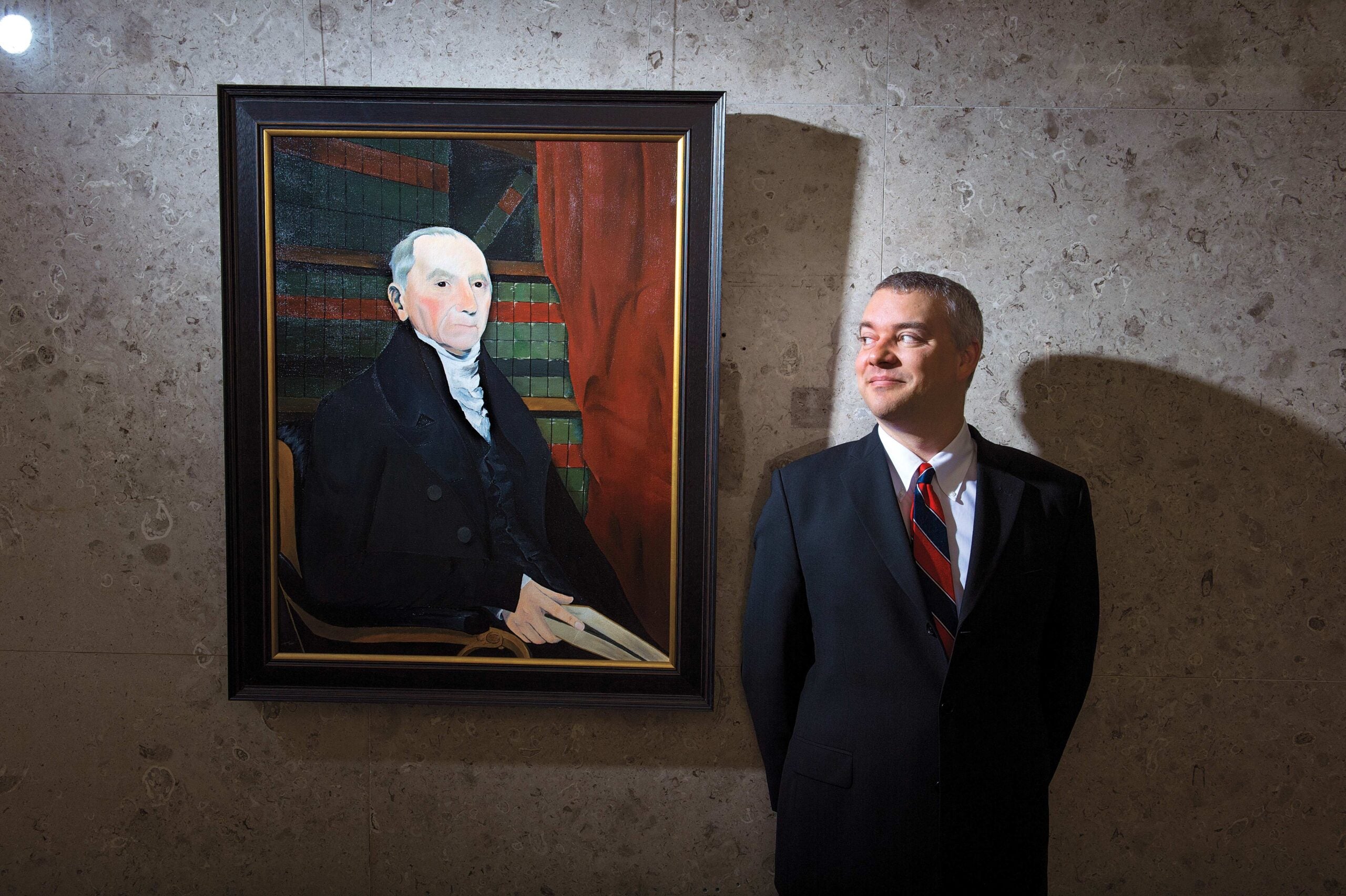On the second floor of the City-County Building in Madison, Wisconsin, just outside the room where the Madison Common Council and Dane County Board meet for legislative sessions, there now hangs the portrait of a man named Nathan Dane. The same steady gaze examines visitors 1,100 miles away as they step off the elevator on the fourth floor in Langdell Hall at Harvard Law School.
The name might sound vaguely familiar to anyone who has lived in the Gropius Complex’s Dane Hall, or to Harvard Law history buffs who know that, for a brief time, the law school was known as the Dane Law College. To many HLS students, however, the portrait looks like one of dozens hanging in the library—a painting of an elderly man with graying hair, dressed in black and holding a book.
But to Tim Kiefer ’98, the painting has always held a special significance. Kiefer attended college in Madison, the seat of Dane County, Wisconsin. Everyone knew who Madison was named after—the fourth president of the U.S., James Madison—but few knew the origin of the county’s name.
When Kiefer arrived at Harvard in 1995 and found himself living in Dane Hall, the former history major’s mind began to make connections. With a little digging, Kiefer discovered that Dane, a Harvard College graduate, had stepped in to save HLS in 1827 when it was down to just one student and one professor, endowing a law professorship and later funding the school’s first commissioned building.
He went on to learn that Dane also drafted the Northwest Ordinance, a document that established the Northwest Territory, laying the groundwork for the entire Midwest region. Dane inserted a last-minute and surprisingly unopposed amendment prohibiting slavery in the newly acquired territory. The addition would come to have a tremendous effect on the national debate between admitting new states to the Union as free or slave states, a battle that would ultimately culminate in the Civil War.
Although Kiefer had never heard of Nathan Dane until stumbling across the portrait nearly 20 years ago, he has since found the tale of a man inserting a history-defining provision into a foundational document at the last minute to be deeply inspiring. He hoped the story would speak to current HLS students as well as the citizens of Dane County.
In 2011, Kiefer, a Madison attorney and current member of the Dane County Board, hoped to arrange for a loan of the portrait for the county’s 175th anniversary. When it became clear that the painting was too old and fragile to travel, the Harvard Club of Wisconsin agreed to finance a painting based on the original, but stipulated that the artist be a Harvard student from Wisconsin. Kiefer set out to find the right undergraduate.
The search led to Neng Thao, a Harvard College student who was born in Chiang Kham Refugee Camp in Thailand—the son of Vietnam War refugees—and came to Madison with his family as a child. Although focused on genetic engineering at Harvard, Thao loves art and has been drawing as long as he can remember. “We had these two people, both of whom attended Harvard College, including one born 200 years after the other, and they’re linked by this portrait,” Kiefer said. “It shows the best of what Harvard can be in a lot of different ways.”
A plaque now commemorates both the original painting by Chester Harding and Thao’s copy in Madison’s City-County Building, telling the tale of Nathan Dane and his contribution to the region. And to ensure that the story is never again lost to history, a manila envelope tucked behind the painting includes clippings explaining the stories of both Dane and the copied painting. “If 50 years from now the painting is lying somewhere in an attic and people are trying to figure out what it’s about, this will help it from being forgotten,” Kiefer said.
